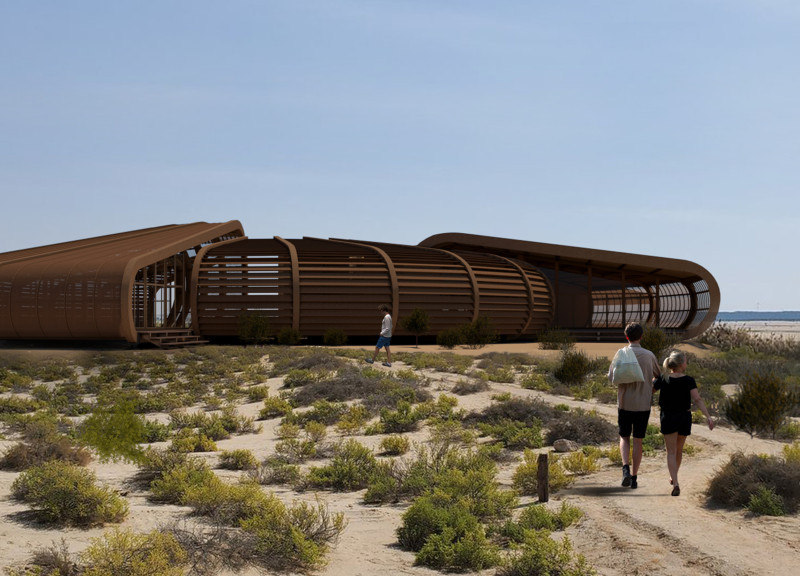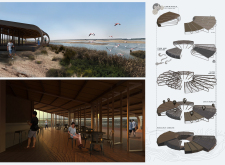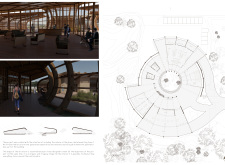5 key facts about this project
The Flamingo Visitor Center is located in the distinct ecological setting of Abu Dhabi, acting as a key destination for visitors interested in the area's unique natural environment. The design centers around the idea of connecting architecture with nature. It prioritizes accessibility and thermal efficiency and features a central patio that encourages interaction between visitors and the surrounding park, reflecting a commitment to environmental sustainability.
Architecture Concept
The design features an introverted layout that invites exploration and curiosity. Its organic shape promotes a harmonious connection with the landscape, allowing for smooth movement around the central patio. The design meets functional needs while establishing a strong bond between the structure and its natural surroundings.
Material Selection
The use of laminated wood in structural components demonstrates an emphasis on durability and flexibility. This material is present in both the upper and lower structures, as well as the supporting pillars, creating a strong framework. The choice of laminated wood aligns with the demand for resilience against environmental challenges such as strong winds and sandstorms, balancing functionality with aesthetic appeal.
Functional Layout
The Visitor Center’s layout organizes various spaces effectively. It includes workstations, storage, a reception area, a gift shop, exhibition panels, a café, and a training room. This arrangement supports educational efforts and encourages interaction with the environment. Each space is designed to facilitate visitor engagement, reinforcing the center's goal of promoting environmental awareness.
The building also features a microclimate generator. This system addresses harsh climate conditions, ensuring a comfortable interior environment while utilizing solar energy. By managing local climate challenges, the design enhances user comfort and contributes to sustainability.
Connections between indoor and outdoor spaces create a comprehensive experience for visitors. Sightlines extend into the surrounding landscape, fostering an important link between the architectural form and nature. This attention to detail helps create an inviting atmosphere that encourages visitors to engage with their environment.






















































